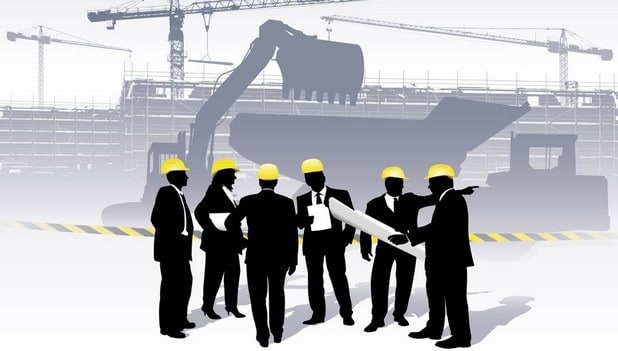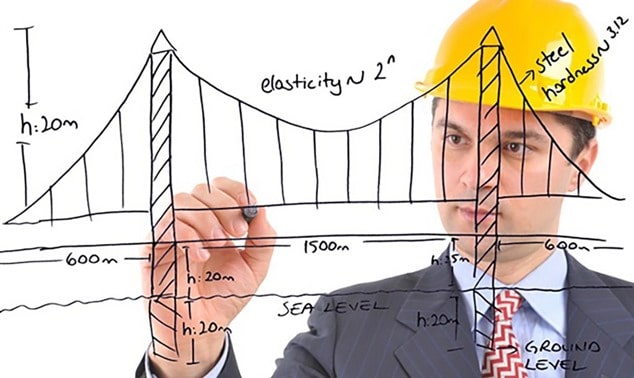The roles and responsibility of project manager to make sure that the customer is satisfied and the work scope is completed in a quality manner, using budget, and on time. The Project Manager has primary responsibility for providing leadership in planning, organizing and controlling the work effort to accomplish the project objectives.
In other words, the project manager provides the leadership to project team to accomplish the project objective. The project manager coordinates the activities of various team members to ensure that they perform the right tasks at the proper time, as a cohesive group.

Roles of a Project Manager
The different roles of project manager are as follows:
- Planning
- Organizing
- Controlling
- Leading
- Communicating
- Cognitive functions
- Self management functions
- Motivational and personal development functions
- Customer awareness functions
- Organizational savvy functions
Planning
First, the project manager clearly defines the project objectives and reaches agreement with the customer on this objective. The manager then communicate this objective to the project team in such a manner as to create a vision of what will constitute successful accomplishment of the objective. The project manager spearheads development of a plan to achieve the project objectives. By involving the project team in developing this plan, the project manager ensures more comprehensive plan than he or she could develop alone. Furthermore, such participation gains the commitment of the team to achieve the plan. The project manager reviews the plan with the customer to gain endorsement and then sets up the project management information system-either manual or computerized-for comparing actual progress to plan progress. It’s important that this system be explained to the project team so that the team can use it properly to manage the project.
Organizing
Organizing involves securing the appropriate resources to perform the work. First, the project must decide which tasks should be done in-house and which tasks should be done by subcontractors or consultants. For tasks that will be carried out in-house, the project manager gains a commitment from the specific people who will work on the project. For tasks that will be performed by subcontractors, the project manager clearly defines the work scope and deliverables and negotiates a contract with each subcontractor. The project manager also assigns responsibility and delegates’ authority to specific individuals or subcontractors for the various tasks, with the understanding that they will be accountable for the accomplishment of their tasks within the assigned budget and schedule. For large projects involving many individuals, the project manager may designate leaders for specific group of tasks. Finally, and most important, the task of organizing involves creating an environment in which the individuals are highly motivated to work together as a project team.
Controlling
To control the project, the project manager implements a management information system designed to track actual progress and compare it with planned progress. Such a system helps the manager distinguish between busy-ness and accomplishments. Project team members monitor the progress of their assigned tasks and regularly provide data on progress, schedule and cost. These data are supplemented by regular project review meetings. If actual progress falls behind planned progress or unexpected events occur the project manager takes immediate action. He or she obtains input and advice from team members regarding appropriate corrective actions and how to replan those parts of the project. It’s important that problems and even potential problems, be identified early and action taken. The project manager cannot take a “let’s wait and see how things works out” approach- things never works out on their own. He or she must intervene and be proactive, resolving problems before they become worse.
Leading
Project manager fosters development of a common mission and vision to the team members. He should clearly define roles, responsibilities and performance expectations for all his team members. He uses leadership style appropriately to situation or stage of team development. He should be able to foster collaboration among team members. He should provide clear direction and priorities to his team members. He should be efficient enough to remove obstacles that hamper team progress, readiness or effectiveness. He should promote team participation in problem solving and decision making as appropriate. He should pass credit on to team, and promotes their positive visibility to upper management. He should appreciate, promote and leverage the diversity within the team.
Communicating
The Project Manager should be able to communicate effectively with all levels inside and outside of the organizations. He should be able to negotiate fairly and effectively with the customers/subcontractors. He should be able to bring conflicts into the open and manages it collaboratively and productively with the help of other team members. He should be able to able to influence without relying on coercive power or threats. He should be able to convey ideas and information clearly and concisely, both in writing and orally to all the team members.
Cognitive functions
The project manager should identify the problem and gathers information systematically and seeks input from several sources. He should then consider a broad range of issues or factors while solving these problems. For this he collects the appropriate quantity of data for the situation and discusses it with all the team members before making a decision. He then draws accurate conclusions from quantitative data and makes decisions in an unbiased, objective manner using an appropriate process. For this process of decision making he understands the concept of risk versus return and makes decision accordingly.
Self management functions
The project manager should be able to maintain focus and control when faced with ambiguity and uncertainty and should be able to show consistency among principles, values and behavior. He should be resilient and tenacious in the face of pressure, opposition, constraints, or adversity. Being the head of the project he should manage implementations effectively and should recognize as someone “who gets things done.” He should continuously seek feedbacks from the team members and modify his behavior accordingly. He should take keen interest in learning and self development opportunities.
Motivational and personal development functions
Project manager should consider individual skills, values and interest of all his team members when assigning or delegating tasks to them. He should allow team members an appropriate amount of freedom to do the job. He should accurately access individual strength and development needs of his team members to complete the work effectively. He should continuously offer opportunities for personal and professional growth to his team members. He should arrange for training program and continuously seeks support to his team member when needed. He should pass credit on to the individuals and promote their positive visibility to upper management. He should give timely, specific and constructive feedback to all his team members.
Customer awareness functions
Project manager should be able to anticipate customer’s needs effectively and proactively strives to satisfy them. He should be able to accurately translate the customer’s verbalized wants into what they actually needs. He should be able to understand customers and their business and actively build and maintain strong customer relationships. He should understand customer’s issues, concerns and queries and try to resolve them effectively. He should actively strive to exceed customer expectations.
Organizational savvy functions
Project manager should involve the right people at the right time for a particular job. Understands, accepts and properly uses power and influence in relationships. He should build and leverage formal and informal networks to get things done. He should know the mission, structure and functions of the organizations and others. He should understand profitability and general management philosophy. He balances interests and needs of team/project with those of the broader organization.


